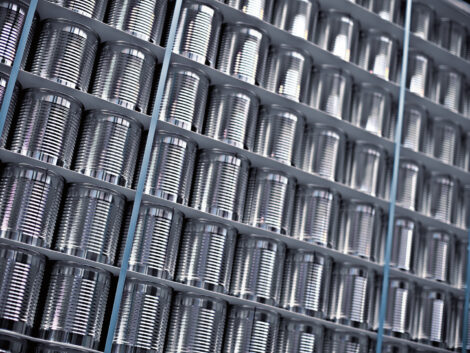Food and beverage metal cans market to reach $46.2bn by 2028
The food and beverage metal cans market is estimated at $33.0 billion in 2023 and is projected to reach $46.2 billion in 2028, at a CAGR of 7.0% from 2023 to 2028, according to a report published by MarketsandMarkets.
Metal cans are used in the packaging of food and beverages along with other consumer goods like aerosols, paints, etc., as it maintains the product shelf-life.
They are typically cylindrical containers that can be customised in terms of appearance by end-consumer manufacturers.
The key driver for the F&B metal cans market is the increase in the demand for convenience food items.
With more and more people embracing a healthy lifestyle, the demand for fresh and canned foods have increased, which fuels the need for metal cans for food & beverage application.
The high demand for canned food drives the market
Canned foods are minimally processed food that is ready-to-eat or ready-to-cook food. Consumers are demanding more of this processed food as it can be stored easily and has a longer shelf-life.
Functional and processed foods are packed in special ways into different metal cans which keeps the taste and texture of the food intact. Additionally, the convenience of foods packed in cans increases its demand in the market.
The growing popularity of aluminium is projected to boost the material segment.
Most aluminium cans are made of two pieces, the can is produced from one metal piece and the manufacturing process is called drawing and wall-ironing.
These cans are light in weight as compared to that other metal packaging materials and are recyclable. Aluminium is abundantly available in nature and is cost-effective. This helps in reducing the overall production cost.
Most of these aluminium cans are single-use cans and wisely have their application due to enhanced malleability properties. The only issue that arises is in terms of the recyclability of aluminium cans which are prepared with a combination of aluminium and magnesium. During the recycling process, the mixture is not fully utilised.
The increasing trend of 2-piece cans in food and beverage application is set to dominate the market during the study period
Two-piece cans are made from a disc of metal which is formed into a cylinder with an integral end. 2-piece cans are produced by molding a single piece of material into a can-shaped body with an integral end and seamed lid.
These cans are designed mainly to keep the taste, texture, and flavour of the food inside fresh and sterile. These cans provide excellent sealing and require less raw material for production. 2-piece cans are primarily used to pack instant food without going through the thermal processing step in manufacturing.








